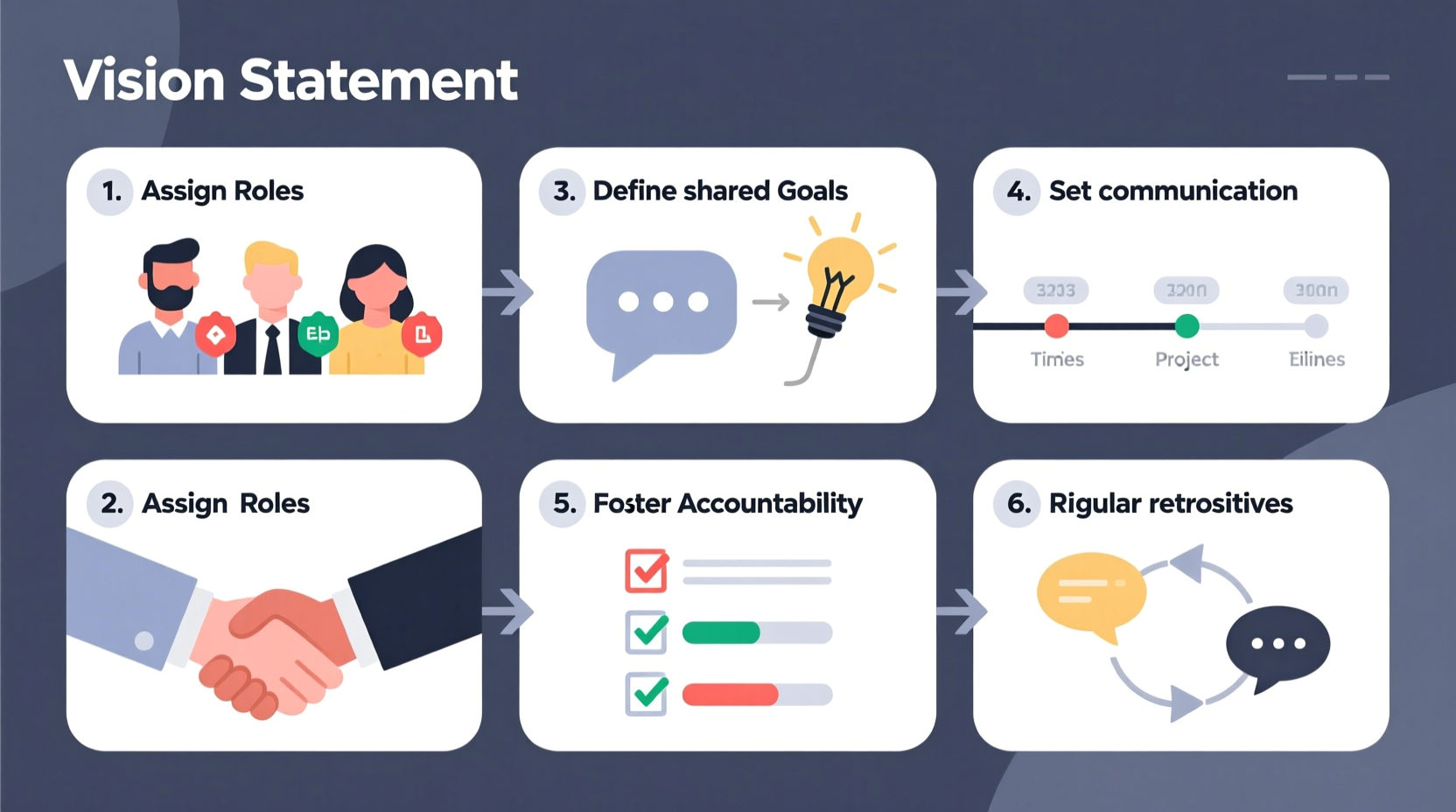Building a successful group isn’t just about gathering people with complementary skills—it’s about creating an environment where trust, clarity, and shared purpose drive consistent results. Whether you're launching a project team at work, organizing a volunteer initiative, or assembling a startup co-founding team, the principles of effective collaboration remain the same. The difference between a group that fizzles out and one that achieves remarkable outcomes lies in intentional design and execution.
This guide breaks down the process into actionable steps, offering practical strategies for structuring, aligning, and sustaining collaborative momentum within any team.
Step 1: Define Purpose and Set Clear Goals

Every strong group begins with a clear reason for existing. Without a defined purpose, members lack direction and motivation. Start by asking: Why does this group exist? What problem are we solving? What outcome are we aiming for?
Once the overarching purpose is established, break it down into specific, measurable goals using the SMART framework—Specific, Measurable, Achievable, Relevant, and Time-bound. For example, instead of saying “improve customer satisfaction,” define the goal as “increase customer satisfaction scores from 78% to 90% within six months.”
Step 2: Select the Right Members
Team composition directly impacts performance. Look beyond technical skills and assess how individuals contribute to group dynamics. Seek diversity in thought, background, and working styles—but also ensure alignment with core values and commitment levels.
Consider these criteria when selecting members:
- Skill complementarity: Does each person bring unique expertise?
- Reliability: Can they meet deadlines and honor commitments?
- Communication style: Are they open, respectful, and responsive?
- Mindset: Do they embrace feedback and value collective success over individual recognition?
“Diversity is being invited to the party; inclusion is being asked to dance.” — Verna Myers, Diversity Advocate
A balanced mix of doers, thinkers, and connectors often leads to more resilient and innovative teams.
Step 3: Establish Roles and Responsibilities
Unclear roles lead to confusion, duplication of effort, or critical tasks falling through the cracks. Assign responsibilities early based on strengths and availability. Use a RACI matrix (Responsible, Accountable, Consulted, Informed) to clarify who does what.
| Task | Responsible | Accountable | Consulted | Informed |
|---|---|---|---|---|
| Create marketing plan | Marketing Lead | Project Manager | Sales Team | Stakeholders |
| Develop product prototype | Engineering Team | CTO | Design Lead | CEO |
| Track budget | Finance Officer | CFO | Department Heads | All Team Members |
Clearly defined roles reduce friction and empower individuals to act decisively within their scope.
Step 4: Build Communication Protocols
Efficient collaboration depends on consistent, transparent communication. Decide early how the team will communicate:
- Which tools will be used (e.g., Slack, email, Zoom, Trello)?
- How often will meetings occur (daily standups, weekly check-ins)?
- What constitutes urgent vs. non-urgent communication?
- How will decisions be documented and shared?
Set ground rules such as “respond to messages within 24 hours” or “use video for complex discussions.” Avoid over-relying on long email threads; opt for concise updates via shared dashboards or brief syncs.
Step 5: Foster Trust and Psychological Safety
No amount of planning can compensate for a lack of trust. Google’s Project Aristotle found that psychological safety—the belief that one won’t be punished for speaking up—is the top predictor of team effectiveness.
To build this environment:
- Encourage vulnerability by having leaders share mistakes first.
- Respond constructively to questions and concerns.
- Recognize contributions publicly and fairly.
- Hold inclusive meetings where everyone has space to speak.
When team members feel safe, innovation thrives because people aren’t afraid to propose bold ideas or flag potential issues.
Mini Case Study: Turning Around a Struggling Product Team
A tech startup’s product team was missing deadlines and morale was low. After interviews, the leader discovered that junior developers hesitated to question design choices, fearing criticism. Once the team lead began modeling humility—admitting gaps in knowledge and inviting feedback—the dynamic shifted. Within two months, sprint completion rates improved by 40%, and idea-sharing increased significantly. The change wasn’t due to new tools or processes, but to a cultural shift toward openness.
Essential Collaboration Checklist
Use this checklist during the formation and ongoing operation of your group:
- ✅ Defined a clear mission and measurable objectives
- ✅ Selected members based on skills, reliability, and compatibility
- ✅ Assigned roles using a RACI or similar framework
- ✅ Established communication norms and tools
- ✅ Scheduled recurring check-ins with agendas
- ✅ Created a shared workspace (digital or physical)
- ✅ Built trust through active listening and recognition
- ✅ Implemented a feedback loop for continuous improvement
Frequently Asked Questions
How many people should be in an effective collaboration group?
Ideal team size ranges from 5 to 9 members. Smaller groups risk skill gaps; larger ones face coordination challenges and reduced accountability. If scaling beyond nine, consider breaking into sub-teams with clear interdependencies.
What if someone isn’t contributing equally?
Address imbalances early. Privately discuss expectations and workload. If behavior persists, revisit role fit or availability. Document concerns and involve HR or leadership if necessary. Equity in contribution preserves team morale.
How do we handle conflict without damaging relationships?
Frame conflict as a sign of engagement, not dysfunction. Encourage direct, respectful dialogue focused on interests, not personalities. Use neutral facilitation when needed. Agreement isn’t always required—alignment on next steps is sufficient.
Conclusion: Turn Your Group Into a High-Performance Unit
Creating a group is simple; making it truly collaborative takes intention, consistency, and emotional intelligence. From clarifying purpose to nurturing trust, each step builds the foundation for sustainable success. The most effective teams aren’t those without challenges—they’re the ones equipped to navigate them together.
Start today: gather your people, define your mission, assign roles, and establish rhythms that support both productivity and connection. Great collaboration doesn’t happen by accident—it’s designed.









 浙公网安备
33010002000092号
浙公网安备
33010002000092号 浙B2-20120091-4
浙B2-20120091-4
Comments
No comments yet. Why don't you start the discussion?